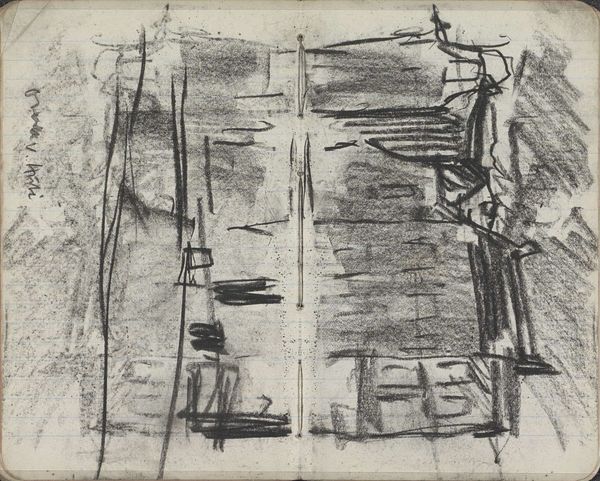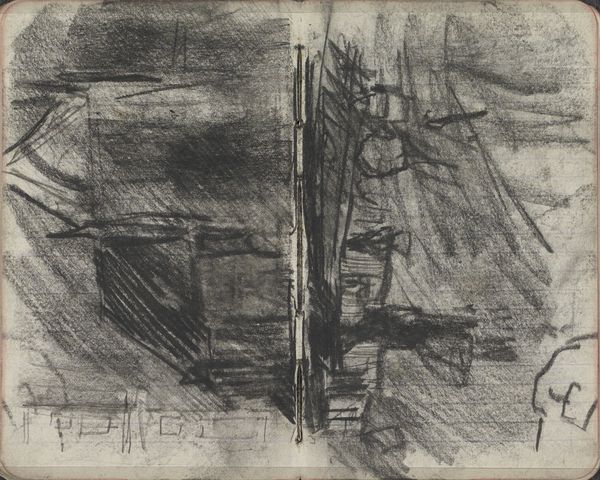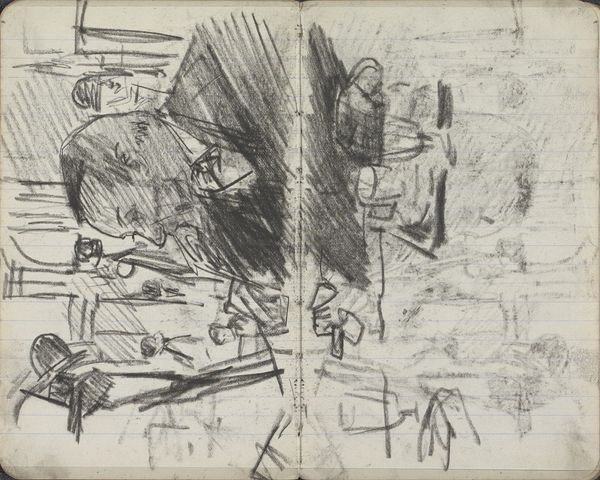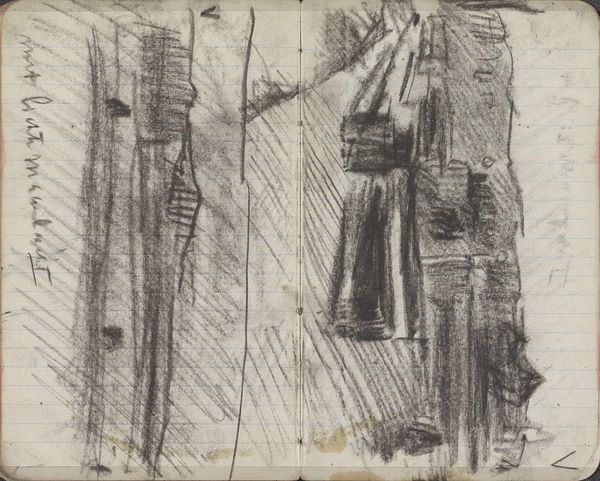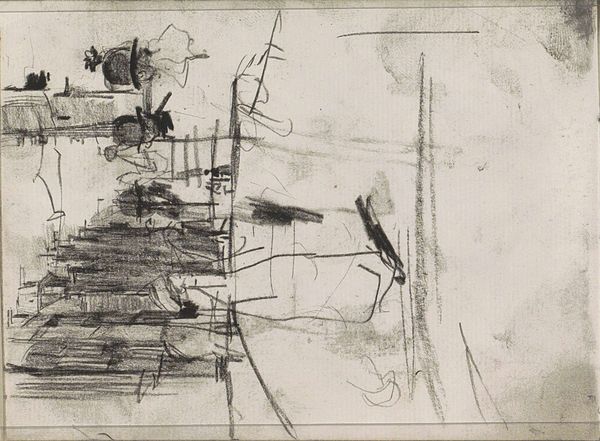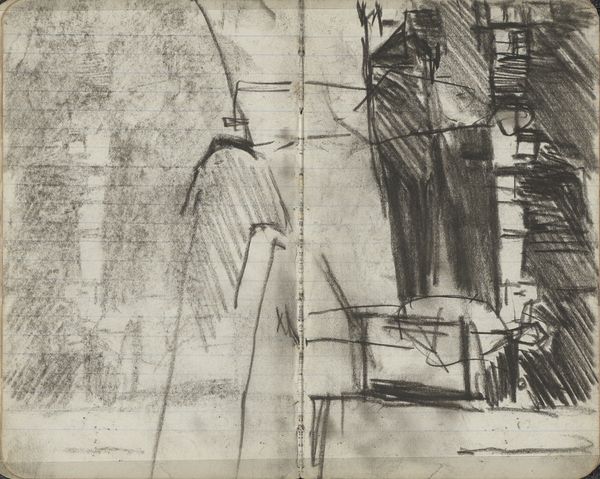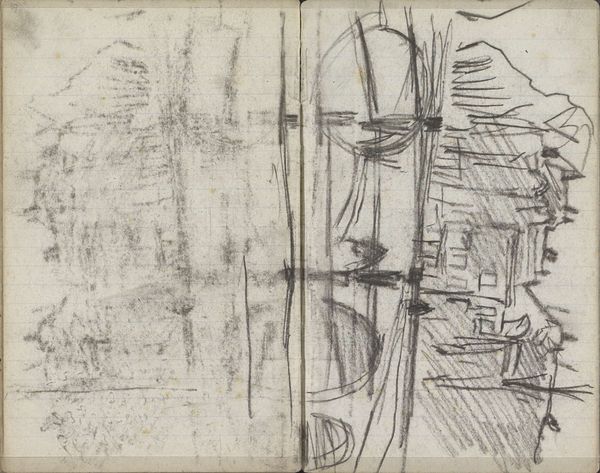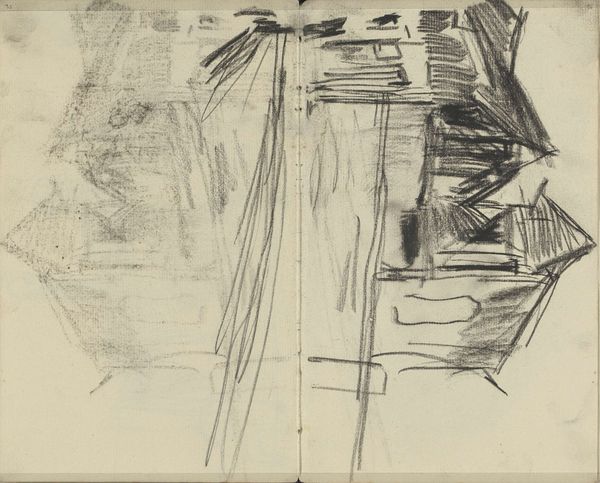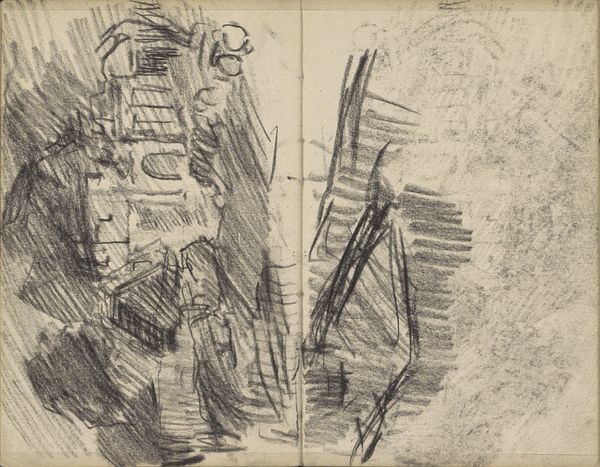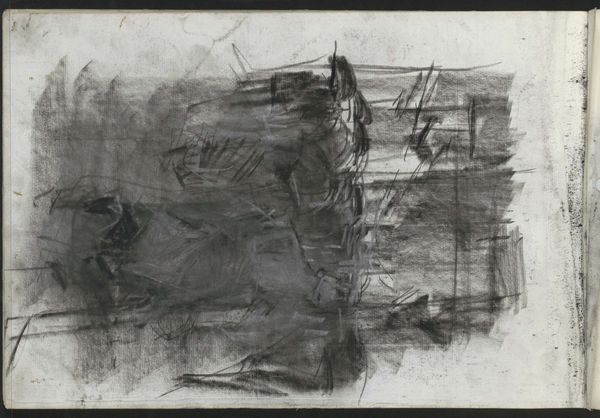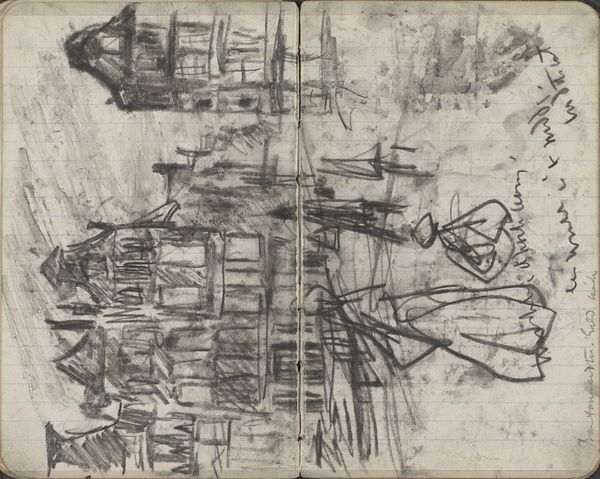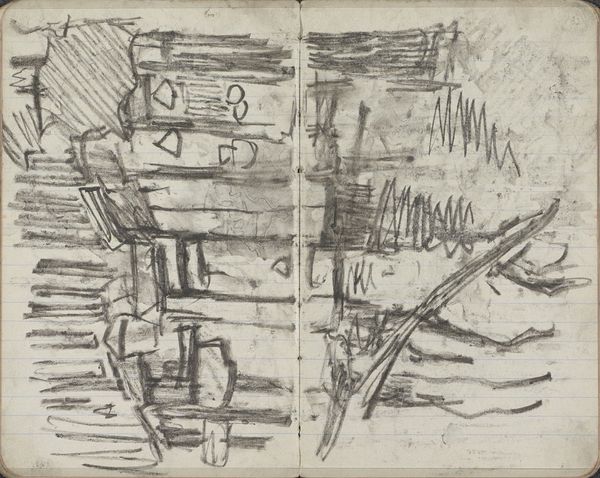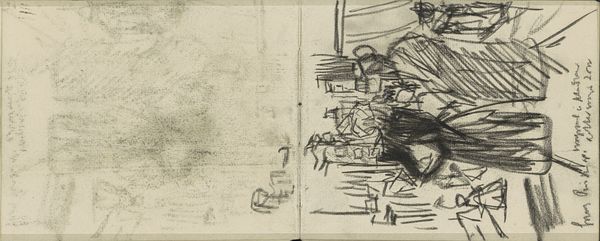
Copyright: Rijks Museum: Open Domain
Editor: This is "Schuit in een gracht te Amsterdam," or "Boat in a canal in Amsterdam," a graphite drawing by George Hendrik Breitner from around 1894. The sketchiness, the stark blacks and whites...it feels very raw and immediate. What jumps out at you in this work? Curator: The work immediately strikes one with its structural tension. Observe how Breitner utilises the graphite to delineate form not through contour, but through varying densities of hatched lines. How do you perceive the interplay between the sketched, almost ephemeral lines and the implied structure of the buildings and boat? Editor: I see what you mean! It’s like he’s suggesting the forms rather than defining them. The horizontal lines of the notebook paper also add to the structure you're pointing out. So, what does that contrast between ephemeral and defined suggest to you? Curator: Precisely. Semiotically, the lines operate on multiple levels. The sketchiness subverts any expectation of photographic realism, inviting us to consider the process of observation itself. The recurring horizontal lines further emphasize surface and materiality. It’s a dance between representation and abstraction, wouldn't you agree? Editor: Yes, I would! So, he's using the inherent qualities of the medium, the graphite and paper, to comment on how we perceive the scene, not just represent it literally. I guess that's what gives it such a modern feel, even now. Thanks for walking me through this! Curator: Indeed. By exploring the materiality of his medium and disrupting representational conventions, Breitner provides a viewing experience that goes beyond simple subject recognition. A fruitful experience, indeed.
Comments
No comments
Be the first to comment and join the conversation on the ultimate creative platform.
